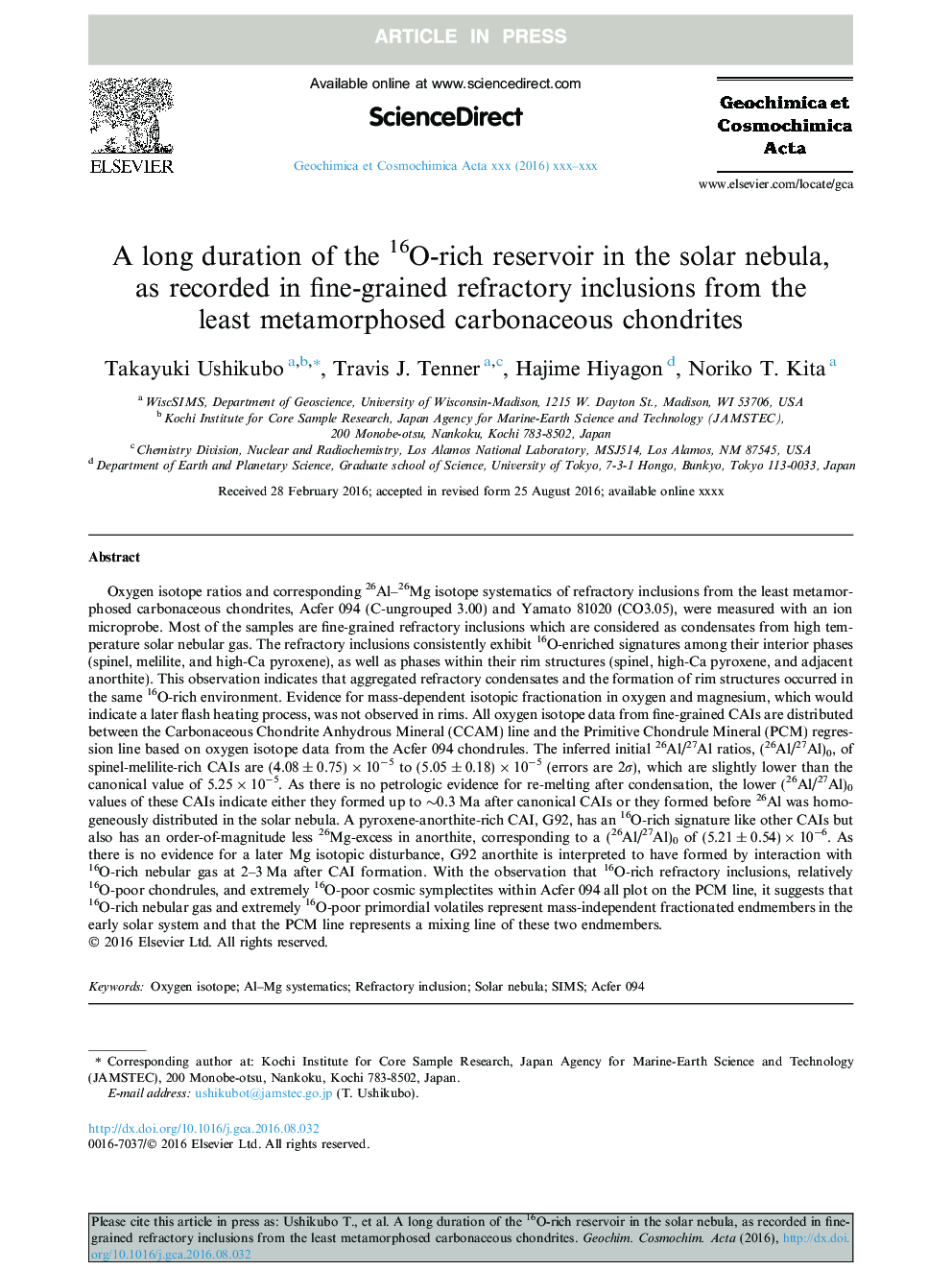| Article ID | Journal | Published Year | Pages | File Type |
|---|---|---|---|---|
| 5783464 | Geochimica et Cosmochimica Acta | 2017 | 20 Pages |
Abstract
Oxygen isotope ratios and corresponding 26Al-26Mg isotope systematics of refractory inclusions from the least metamorphosed carbonaceous chondrites, Acfer 094 (C-ungrouped 3.00) and Yamato 81020 (CO3.05), were measured with an ion microprobe. Most of the samples are fine-grained refractory inclusions which are considered as condensates from high temperature solar nebular gas. The refractory inclusions consistently exhibit 16O-enriched signatures among their interior phases (spinel, melilite, and high-Ca pyroxene), as well as phases within their rim structures (spinel, high-Ca pyroxene, and adjacent anorthite). This observation indicates that aggregated refractory condensates and the formation of rim structures occurred in the same 16O-rich environment. Evidence for mass-dependent isotopic fractionation in oxygen and magnesium, which would indicate a later flash heating process, was not observed in rims. All oxygen isotope data from fine-grained CAIs are distributed between the Carbonaceous Chondrite Anhydrous Mineral (CCAM) line and the Primitive Chondrule Mineral (PCM) regression line based on oxygen isotope data from the Acfer 094 chondrules. The inferred initial 26Al/27Al ratios, (26Al/27Al)0, of spinel-melilite-rich CAIs are (4.08 ± 0.75) Ã 10â5 to (5.05 ± 0.18) Ã 10â5 (errors are 2Ï), which are slightly lower than the canonical value of 5.25 Ã 10â5. As there is no petrologic evidence for re-melting after condensation, the lower (26Al/27Al)0 values of these CAIs indicate either they formed up to â¼0.3 Ma after canonical CAIs or they formed before 26Al was homogeneously distributed in the solar nebula. A pyroxene-anorthite-rich CAI, G92, has an 16O-rich signature like other CAIs but also has an order-of-magnitude less 26Mg-excess in anorthite, corresponding to a (26Al/27Al)0 of (5.21 ± 0.54) Ã 10â6. As there is no evidence for a later Mg isotopic disturbance, G92 anorthite is interpreted to have formed by interaction with 16O-rich nebular gas at 2-3 Ma after CAI formation. With the observation that 16O-rich refractory inclusions, relatively 16O-poor chondrules, and extremely 16O-poor cosmic symplectites within Acfer 094 all plot on the PCM line, it suggests that 16O-rich nebular gas and extremely 16O-poor primordial volatiles represent mass-independent fractionated endmembers in the early solar system and that the PCM line represents a mixing line of these two endmembers.
Keywords
Related Topics
Physical Sciences and Engineering
Earth and Planetary Sciences
Geochemistry and Petrology
Authors
Takayuki Ushikubo, Travis J. Tenner, Hajime Hiyagon, Noriko T. Kita,
